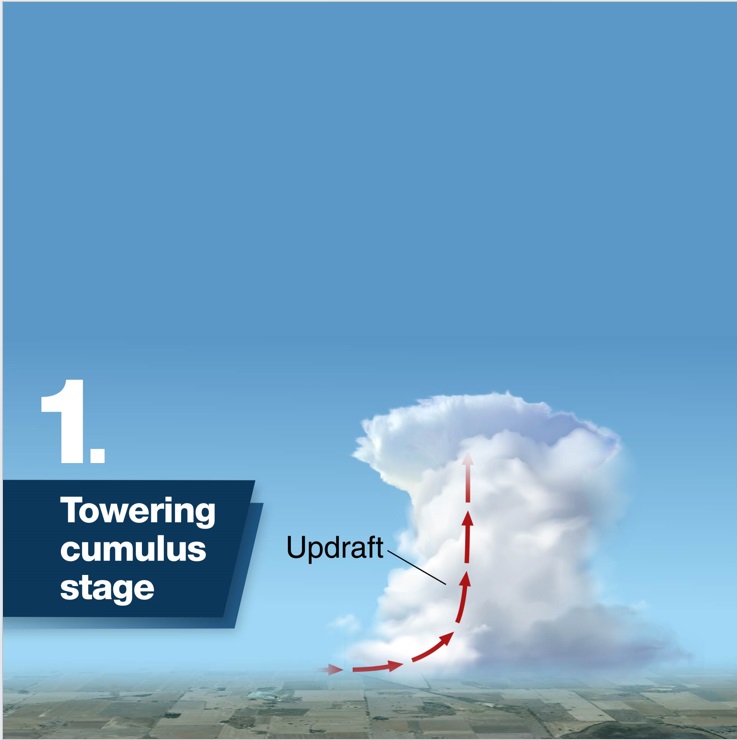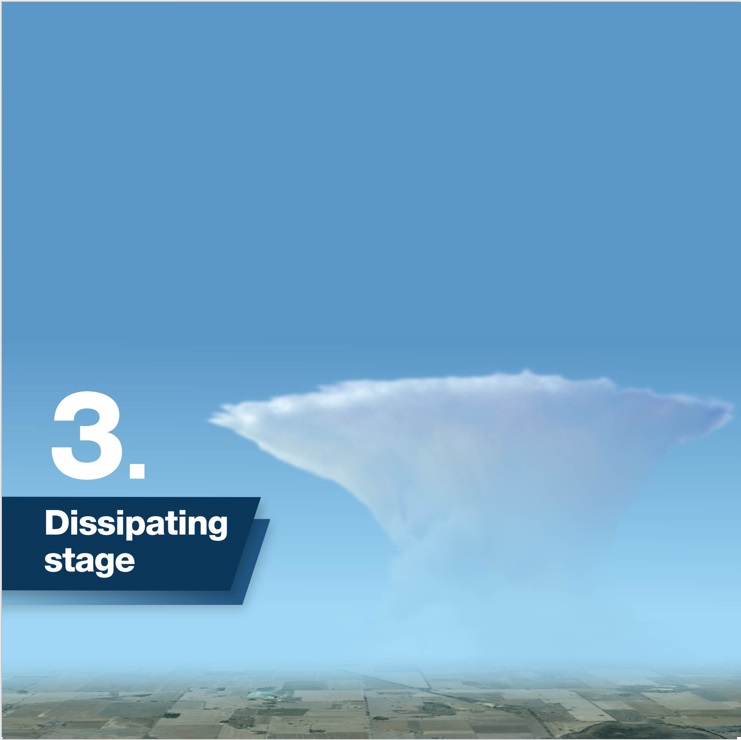Most thunderstorms form in three stages:
- The developing stage – when storm clouds form;
- The mature stage – when the storm is fully formed;
- The dissipating stage – when the storm weakens and breaks apart.
The Development Stage
When warm, moist air moves upward (due to an updraft), cumulus clouds may form in the atmosphere. As air rises it cools down. so the moisture in the air condenses into visible water droplets. These are called clouds. The cloud will continue to grow as long as warm air from below continues to rise.
The presence of towering cumulus indicates a huge convection activity. During this stage, the growing towering cumulus cloud is dominated by updrafts
Near the end of the towering cumulus stage, the cloud becomes very high and cold, and the top portion of the cloud becomes “glaciated” (composed of ice crystals), causing it to take on a slightly fuzzy or fibrous appearance
In the development stage only updrafts are present.

The Mature Stage
As the cumulus cloud continues to grow, tiny water droplets within the cloud, grows larger as more water from the rising air is added to the droplets.
The cloud starts to look dark and gray as more water is added to it.
This growing droplets that make up the cloud becomes heavy. Meanwhile, cool dry air flows downward in the cloud, called a downdraft, pulls the water down as rain. Raindrops start to fall through the cloud when the rising air can no longer hold them up.
With an updraft, downdraft, and rain, the cloud is now called a cumulonimbus cloud and the cycling of air up and down is called a thunderstorm cell.
With the tropopause acting like a “lid”, air parcels spread out horizontally along it to form the glaciated anvil.
Single-cell thunderstorms occasionally may also produce small hail in the mature stage.
In a Mature stage, both updraft and down draft is present

The Dissipating Stage
When the downdrafts in the cloud become stronger than the updrafts, the storm starts to weaken. Since warm moist air can no longer rise, cloud droplets can no longer form.
The storm dies out with light rain as the cloud disappears from bottom to top.
The whole process takes about one hour for an ordinary thunderstorm. Severe thunderstorms like supercells and squall lines are much larger, more powerful, and last for several hours.

